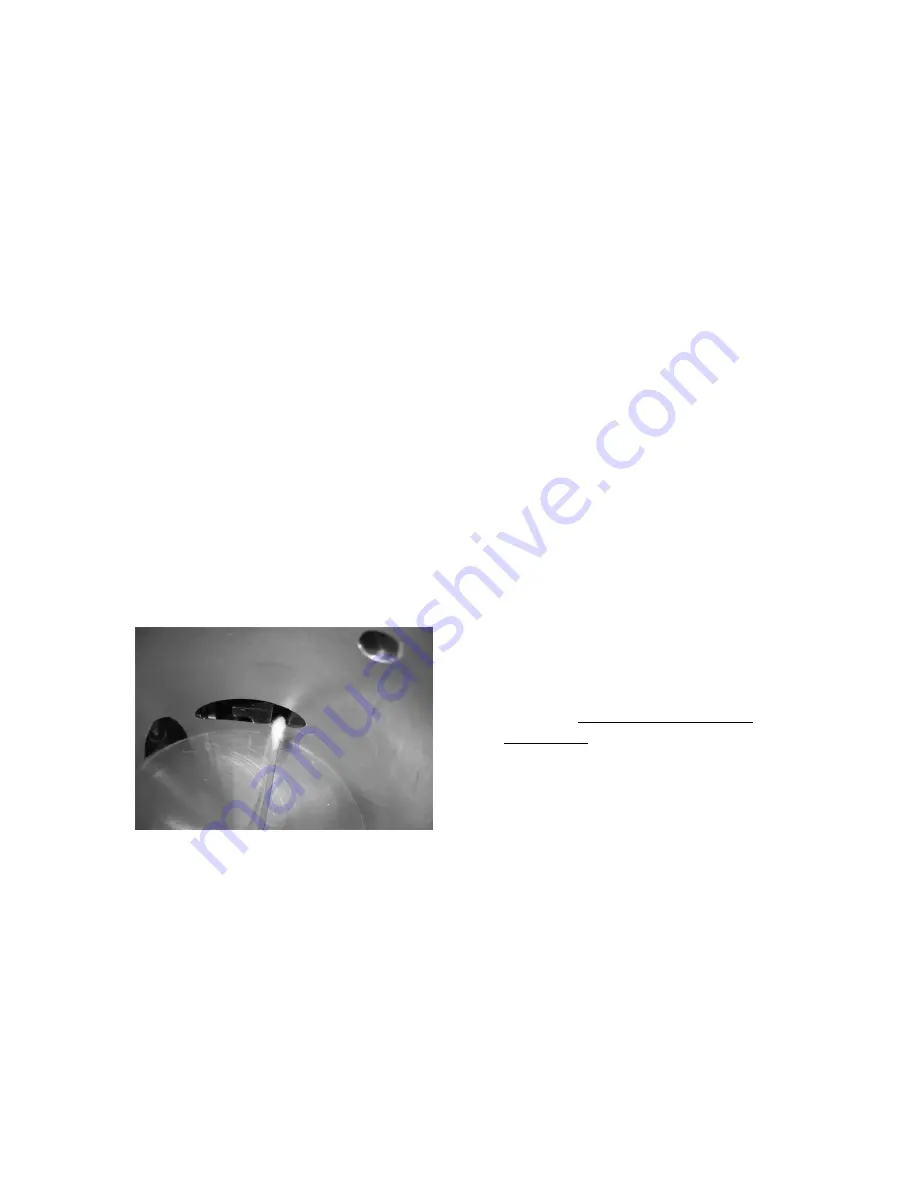
33
14.0 MAINTENANCE
14.1 ROUTINE MAINTENANCE
To maintain the maximum in accurate and reliable operation of any optical chilled
mirror system, a periodic maintenance program should be established.
14.1.1 MIRROR CLEANING SCHEDULE
The buildup of contamination on the mirror surface normally occurs very slowly.
Over time, particulates and other matter present in the sample gas that are not
captured by filters build up on the mirror. The result of the buildup of contaminants
on the mirror surface is reduced dry mirror reflectivity and a change in the optical
reference point. The ABC Cycle will automatically readjust the reference point
periodically, but eventually the adjustment range will be exceeded and a manual
cleaning of the mirror may be necessary. When the contamination becomes too
severe to be adjusted automatically, a CLEAN MIRROR warning will be shown on
the Display at the end of the periodic ABC Cycle. Normally, intervals of at least 90
days between routine mirror cleanings can be easily achieved. However, if the
sample contaminants are particularly high, more frequent mirror cleanings may be
required. When cleaning is required, clean the mirror surface and optical parts.
14.1.2 CLEANING THE MIRROR
To clean the mirror surface in the Sensor:
1. Remove the spin-off cover from the
Sample Chamber. Notice the oval
opening at the bottom of the chamber
at the 3 o’clock position. Inside the
opening, toward the front of the
instrument and oriented vertically, the
mirror is the shiny flat metal disk
about ¼ inch (0.6 cm) in diameter.
Figure 14-1. Cleaning mirror with swab
2.
Press the “HEAT” key on the front panel to heat the mirror and evaporate any
condensate.
3. Cotton swabs and an empty cleaner bottle are provided in the Cleaning Kit
shipped with the system. Fill the bottle with isopropyl alcohol
purchased locally. Moisten a clean cotton swab with isopropyl alcohol. Wipe the
mirror surface and the entire vertical mirror cavity area in a circular motion.
After cleaning the mirror surface, wipe the surfaces dry with a clean cotton swab.
Do not re-use the swabs. Next, moisten a clean cotton swab with clean, preferably























